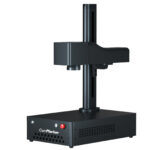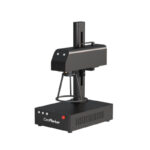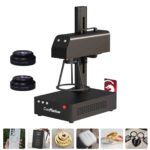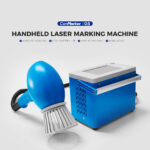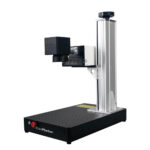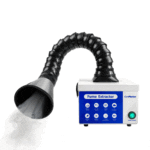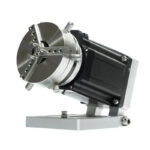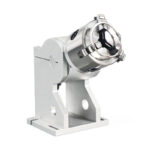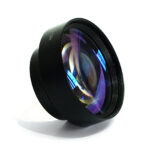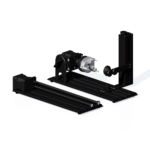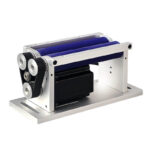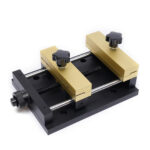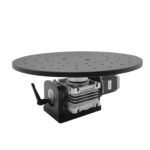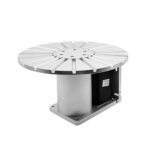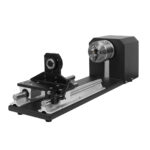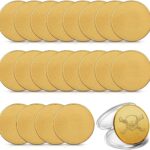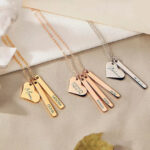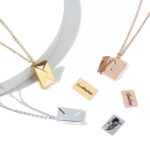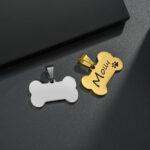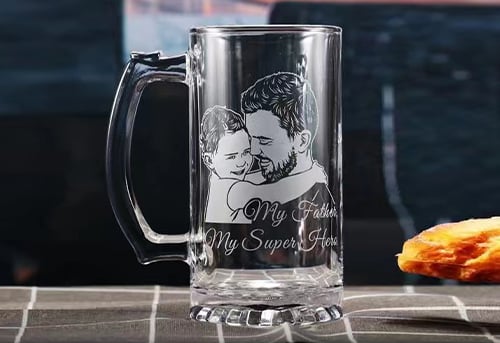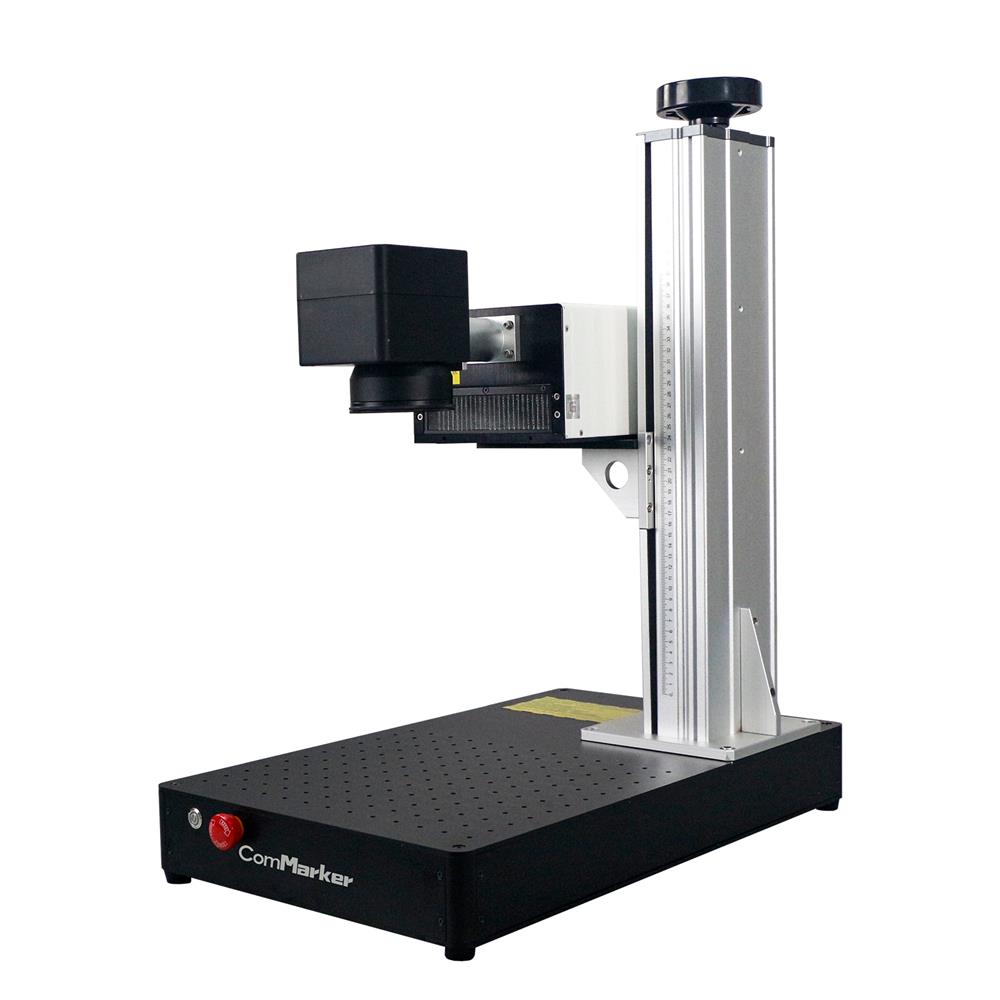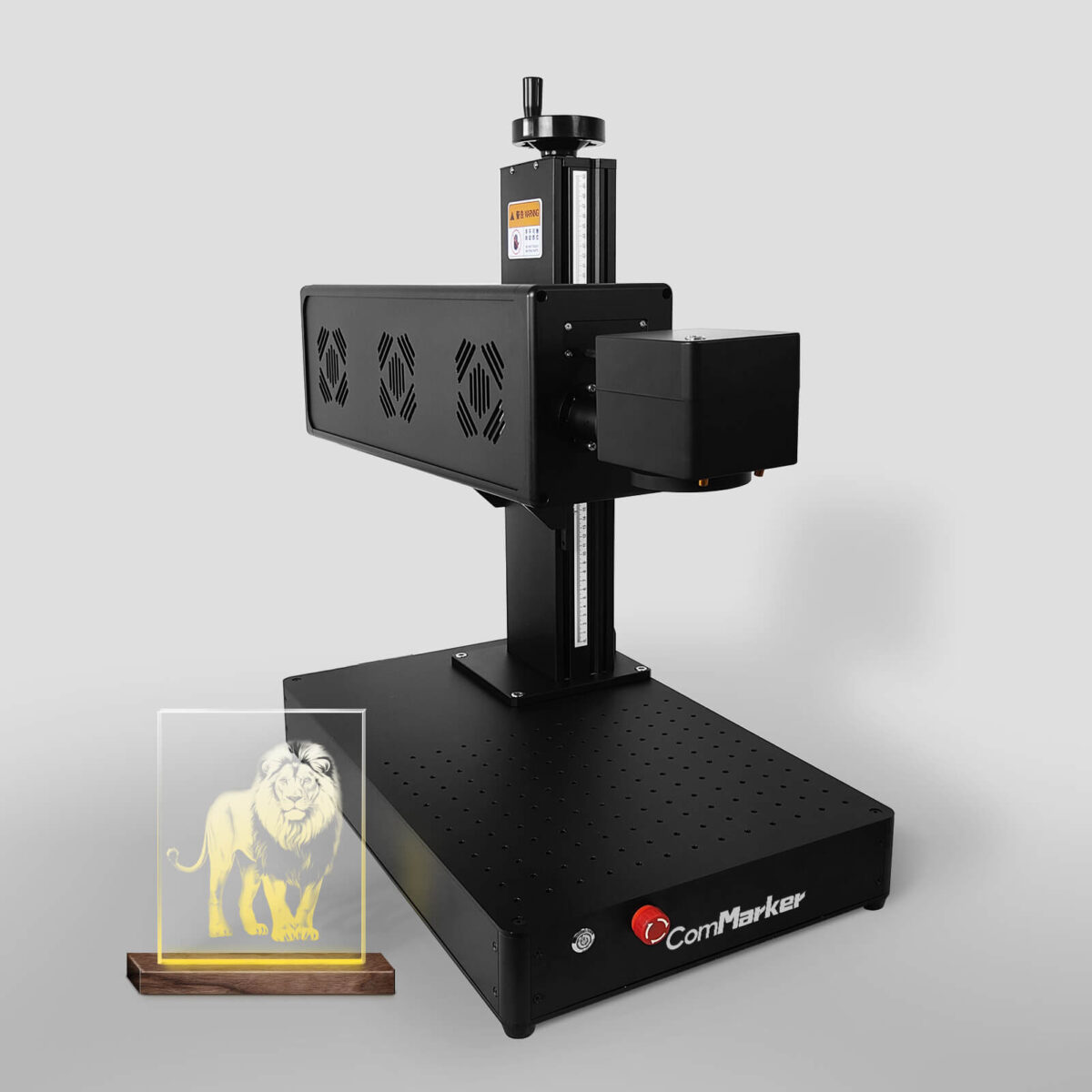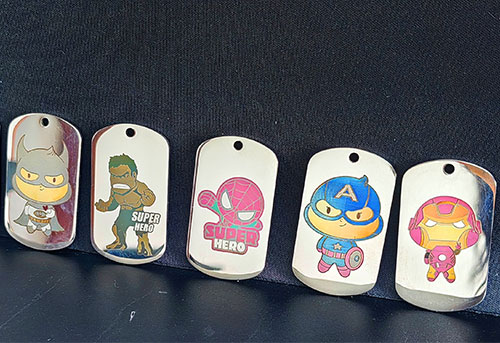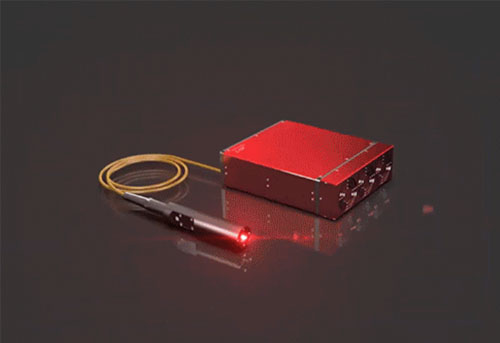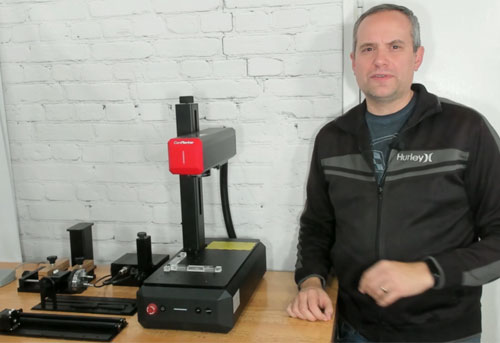Glass laser engraving is a pinnacle of modern craftsmanship, unveiling a fusion of technical prowess and artistic finesse, where each engraved detail represents a story of precision and creativity.
Within these pages, we open up to different laser engraving machine–UV, CO2, Diode, and Fiber– each type brings its own set of unique characteristics to the canvas of glass, offering distinct advantages and capabilities.
In this guide, we’ll dig into all these laser options for glass, further knowing their operational efficiency, wavelength principle, power parameters, and speed capacity, so we’re better able to figure out what suits the best for marking glass. Let’s get started.
Table of Contents
Laser Engraving Glass: Finding the Perfect Match for Your Artistic Vision
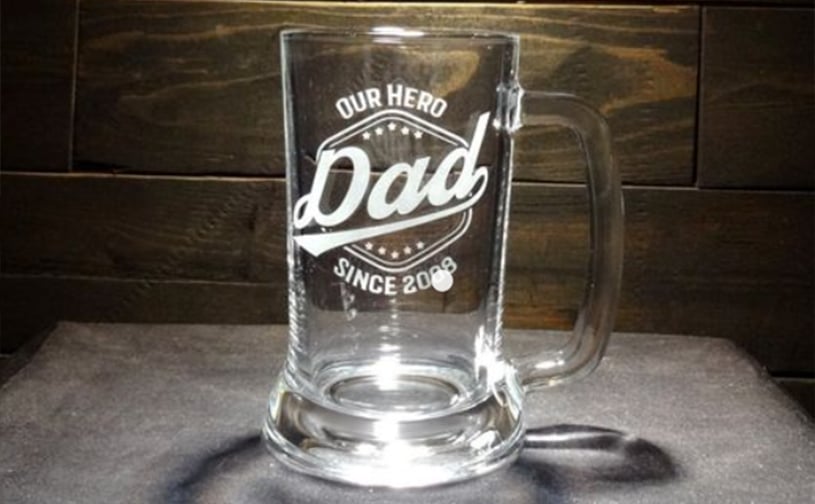
When we step into the intricate world of glass marking, we see laser engraving technology is doing wonders creating breathtaking designs with accurate details and precision. From personalized gifts to intricate architectural elements, the applications of laser engraving on glass are as diverse as they are captivating.
However, harnessing the power of the laser beam of UV, CO2, fiber, or diode lasers is similar to selecting the perfect brush for a masterpiece.
The UV lasers stand at the forefront of professional glass engraving, unlocking the possibilities for those who dare to carve their imagination onto the transparent canvas of glass. UV lasers excel with their ability to create crisp, high-resolution designs ideal for intricate patterns and fine details.
UV Laser Marking Machine
ComMarker UV Laser Marking Machine 📜Specification parameters: Air Cooling, Power: 3W/5W Size:350x650x720mm(13.78×25.59×28.35inch), Lens: 110mmx110mm(6.89×6.89inch), Weight: 50.71 lbs(23KG) 🤖ComMarker UV laser
Meanwhile, diode lasers offer compactness and affordability, making them a practical choice for smaller-scale engraving projects. Diode lasers, with their focused beam of light, facilitate you in transferring your designs onto glass items using heat transfer paper.
The CO2 lasers that wield versatility as their strength to handle various material types may be another option for some glass surfaces, but they’re riskier to burning these materials or producing uneven, cracky edges.
Coming to fiber laser models that are known for boasting higher speed and efficiency are the least considerable machines for fragile glass because their shorter wavelength makes it susceptible to material burning, cracks, and damage.
Ultimately, the best choice for glass engraving depends on the specific requirements of the task at hand, Whether you need pinpoint precision, versatility to handle different glass types, lightning-fast speed, or just something that won’t break the bank, there’s a laser out there for you. It’s all about finding that sweet spot where technology meets artistry, making sure every stroke of the laser adds that extra sparkle to your glass masterpiece.
Unveiling the Brilliance of UV Laser Engravers For Glass
When you’re gearing up to add some flair to your glass mugs, tumblers, or decorative pieces with a personal touch, UV lasers step into the limelight as the champions of engraving machines. They work their magic by emitting ultraviolet (UV) light onto glass surfaces, crafting designs with jaw-dropping precision.
The reason is that these engravers emit a shorter wavelength and high-energy light beam, which interacts with the surface of the glass, causing localized heating and vaporization.
By precisely controlling the intensity and movement of the laser beam, intricate designs appear on your glass with stunning clarity and detail.
But here’s where the UV laser really shines: it gives your glass that smooth, frosted finish that exudes professionalism. Whether you’re engraving fancy patterns, company logos, or heartfelt messages, UV lasers leave you with designs so sharp and elegant, that they’ll make heads turn.
And let’s talk efficiency – these devices are highly efficient and super energy-savvy. Their precise control over the laser beam ensures minimal wastage of energy. At the same time, their rapid engraving speed allows for the quick production of high-quality designs, perfect for those big jobs where time is money.
With that said UV laser engraving is a non-physical affair. No need to worry about glass cracking or messing up your design with physical contact – it’s all a smooth laser process from start to finish. So, sit back, relax, and watch your glass come to life with UV laser magic.
Besides standing as beacons of innovation and precision in the realm of glass engraving, UV engravers come with certain downsides. Compared to other laser equipment, it’s a bit pricier exhibiting a higher upfront cost.
Also, operating these laser engraver requires specific technical knowledge and expertise. From understanding the intricacies of laser settings to mastering design software for creating custom artwork, users must undergo thorough training to maximize the potential of UV engraving machines.
Once you get the hang of it, it lets you push the boundaries of creativity and craftsmanship to new heights.
| Features | Pros | Cons |
| High Precision | – Ideal for intricate designs and fine detail work on glass | – Higher initial cost compared to other engraving methods. |
| Shorter Wavelength | – Well-suited for marking nearly all glass types. | Requires specific technical knowledge for operation. |
| Non-contact Engraving | -No thermal damage to the delicacy of the glass material. | |
| Efficient Energy Use | – Energy-efficient operation. |
Mastering Diode Laser Engravers For Glass: Craftsmanship in Compact Form
If you’re all about keeping things simple yet effective, diode laser models are where it’s at. These compact machines use semiconductor diodes as their laser source, emitting a focused beam of light to engrave designs onto materials like wood, plastic, and even some types of glass using heat transfer paper.
And the best part? They’re compact and light, perfect for small-scale glass projects. They feature a sleek design with a laser module, control panel, and engraving bed all snugly housed within a compact enclosure. Setting them up and getting them going is a breeze, making them a hit with hobbyists and beginners just dipping their toes into the world of glass laser engraving.
For those on the hunt for a budget-friendly and portable solution, diode laser models fit perfectly. These handy gadgets are a dream for small-scale or do-it-yourself glass projects, offering a simple way to add personalized touches to your creations. Their compact size and lightweight design make them a breeze to transport, whether you’re working in your garage or taking your hobby on the go.
However, it’s worth noting that while diode laser engraver excel in simplicity and affordability, they may not quite measure up to the standards required for professional-grade quality or large-scale projects. So, while they’re fantastic for tinkering and experimenting, they might not be the best bet if you’re aiming for top-notch precision or mass production.
| Feature | Pros | Cons |
| Precision | The focused beam of light can create intricate engravings using heat transfer | -Lack of professional-looking results |
| Affordable | Budget-friendly machine | – non-suitable for large-scale projects |
| Versatility | – Can engrave various designs and patterns | – Limited to certain types of glass |
| Durability | – Engraving is permanent | – Susceptible to chipping or cracking |
| Customization | – Easy to customize designs | – ineffective without physical masking |
| Non-contact | – Non-contact process reduces damage risk | – May produce micro-fractures in glass without heat transfer paper |
| Efficiency | – Low maintenance and operational costs |
Navigating Glass Engraving with CO2 Laser Engravers
When starting your glass engraving tasks with CO2 laser technology, heat transfer paper is all that you need. CO2 laser engravers work on the principle of giving out high-powered light beams from a mix of carbon dioxide gas. This light, with its infrared glow, strikes over the glass, and heats it up, forming your design right there on the surface.
ComMarker CO2 Laser Marking Machine
Industry-leading CO2 Galvo Laser engraver and Marking System Different from fiber laser engraver machine ,CO2 laser marking machine adopt CO2 RF
The laser beam from CO2 emits infrared light measuring a wavelength of around 10.6 micrometers, which interacts with the glass, causing localized heating and vaporization, so you can have precise engraving of designs onto the glass, ranging from intricate patterns to text and logos.
With CO2 lasers, you’ve got the leverage to go shallow on your engravings, which makes them suitable for thin glass types, from your everyday stuff to the fancy borosilicate variety.
Talking about operational efficiency, it’s a bit low for glass, though, this versatile machine offers high-speed engraving capabilities with minimal setup time. The only prerequisite is this laser technology requires the need for physical templates or colored paper, allowing for quick and easy customization of glass substrates.
So, all you can imagine with CO2 lasers are intricate designs and complex patterns with ease, making them ideal for marking logos, text, serial numbers, or decorative motifs on glassware.
Owning to its adaptability to do deep engraving, the heat-based method used by CO2 lasers may struggle to penetrate deeper into the glass substrate, resulting in less efficient engraving of thicker materials.
However, when you’re pushing those CO2 lasers to focus too much heat, you might end up stressing out your glass surfaces, leading to some cracks or uneven shapes in your engravings. So, it’s all about finding that sweet spot where precision meets perfection.
| Feature | Pros | Cons |
| Precision | -Capable of engraving intricate designs | – Struggles with deep engraving |
| Speed | – High-speed engraving capabilities | – Less efficient for thicker glass |
| Versatility | – Suitable for thin glass types | – Requires physical templates or paper |
| Efficiency | – Minimal setup time | – Lower operational efficiency for glass |
| Longer Wavelength | Customization is easy using heat transfer paper | – May stress glass surfaces |
| Depth Control | – Can go shallow on engravings | – Limited ability to penetrate deeply |
| Adaptability | – suitable for marking logos, text, motifs | – Risk of cracking or uneven edges |
Exploring Fiber Laser Engravers for Glass Markings: Precision In Action
When it comes to handling metals and some plastics, fiber laser models are the most versatile, and efficient to get the job done, but when glass products are brought under its laser power, they’re not usually a good pick.
Why? Well, it all comes down to the delicacy of glass material and non-compatibility with fiber laser beams.
Fiber laser engraver harness the power of solid-state laser sources, typically crafted from rare-earth elements like erbium, ytterbium, or thulium. Emitting a potent beam of light ranging from 1,060 to 1,080 nanometers, these systems are engineered for meticulous engraving tasks.
However, when it comes to glass, their high-density energy renders them less suitable. Clear glass, in particular, poses a challenge as it tends to reflect a substantial portion of the laser beam, hindering the engraving process and potentially yielding incomplete results.
Yet, despite this limitation, fiber laser engraving machine shine when paired with coated glass. By capitalizing on their unparalleled precision, coated glass surfaces provide a conducive canvas for leveraging the full potential of their high-precision laser capabilities.
In essence, while fiber laser engravers may encounter hurdles with clear glass, their adeptness with coated glass opens avenues for impeccable engraving outcomes.
However, it’s not always an ideal option for working over glass materials. You may need additional preparation on glass, otherwise, the intense heat produced by fiber lasers can lead to surface damage on the glass, such as microcracks or distortion, ultimately affecting the overall quality of the engraving and resulting in less-than-ideal outcomes.
| Feature | Pros | Cons |
| Efficiency | – Highly efficient for many materials | – Less efficient for glass surfaces |
| Speed | – Fast processing speed | – Limited depth control on glass |
| Precision | – High-precision engraving on metals and plastics | – May cause surface damage to glass |
| Maintenance | – No maintenance requirements | – Risk of damaging delicate glass surfaces |
| Flexibility | – Can handle various shapes and sizes | – Limited effectiveness for curved glass |
| Safety | – Generally safe operation | – Risk of thermal stress and micro-fractures on glass |
A Guide to Finding Your Ideal Engraving Companion
Coming to unleash the creative possibility of laser machines on glass, the choice between UV, CO2, fiber, or diode lasers is like grabbing a perfect tool for artistry.
To ensure a successful engraving outcome every time, several factors should be taken into account, predominantly matching the laser type to the specific requirements of the project.
Here’s a breakdown of other factors to consider.
- Precision Matters: Think about the level of detail you need. If you’re all about those intricate designs, a UV or fiber laser should be your go-to machine with its super-precise engraving capabilities.
- Know Your Glass: Different lasers handle different types of glass differently. Some may excel on coated or colored glass, while others might struggle with clear surfaces. So if your engraved object is made of soda lime or borosilicate glass, a UV engraver is the most suitable option.
- Size Up Your Project: Are you working on a small-scale DIY thing or tackling something big? Your project size will help you decide if a diode laser is enough or if you need the horsepower of a CO2 or UV laser.
- Budget Check: How much money are you willing to spend? Diode lasers are easy on the wallet, but if you’ve got the cash to spare, CO2 or UV lasers might offer more benefits for your buck.
- Keep It Simple: If you’re new to the game, you’ll want an engraver that’s easy to set up and use. Look for models with user-friendly interfaces and controls. Luckily, all our ComMarker models are super simple and less technical, making the engraving process very smooth and trouble-free.
- Versatility Rules: Make sure your laser engraver can handle more than just glass. You never know when you’ll want to branch out and engrave other materials.
- Maintenance Check: Nobody likes a high-maintenance machine. Check what kind of upkeep your engraver needs and make sure it fits your maintenance style.
– ComMarker Additional Guidance for Beginners
Getting started with glass engraving can be pretty thrilling, but let’s face it, it can also leave you scratching your head as a newbie. No worries, though! ComMarker offers a comprehensive beginner’s guide that’s as friendly as it gets.
We provide step-by-step instructions, helpful tips, and creative ideas to empower newcomers to dive into the engraving art with confidence. Here’s the breakdown of resources you can benefit from
- Online tutorials and Blogs: We offer distinct online tutorials and guides that cover various aspects of engraving including software usage, setup, operation, and troubleshooting. Through these video demonstrations and informative blogs, you can better equip yourself with beneficial tips for optimal results.
- User manuals and Documentation: Don’t toss those handy guidebooks aside, in fact, make use of these manuals to learn about your laser engraver details–functionalities, features, and specifications– and various safety protocols to be proficient in your engraving tasks.
- Customer Support: Ever stuck with your laser engraving tasks? Don’t panic, we’ve our customer support team ready to help you out with whatever you need, whether it’s setup issues, troubleshooting, or just some maintenance advice to keep going.
No matter whether you’re exploring basic techniques or experimenting with advanced designs, our guide will be right there with you, cheering you on and making sure you have an amazing experience along the way. So, buckle up and get ready for a journey that’s equal parts fun and rewarding!
Conclusion
So, summarizing it down to glass engravings, our UV lasers are the trusty all-rounder– they’re efficient, precise, and compatible with the delicate nature of glass. Because they emit ultraviolet light, they can carve out intricate designs with ease. Plus, they’re great for deep engraving, making them ideal for all sorts of glassware, from your everyday tumblers to fancy borosilicate creations.
On the other hand, diode, CO2, and fiber laser options –although they’re great for certain materials–show their inefficiency with glass substrates, giving it the least considerable machines in the engraving category.
But here’s the real deal–picking the right machine for the right kind of job makes all the difference. Each laser system got its own strengths and competencies and thus their compatibilities with materials also differ. So, it’s you who makes all the choices.
No matter what you choose always remember to stay safe and keep your machine well-maintained. That way, you’ll be carving out masterpieces for years to come. Happy engraving!

